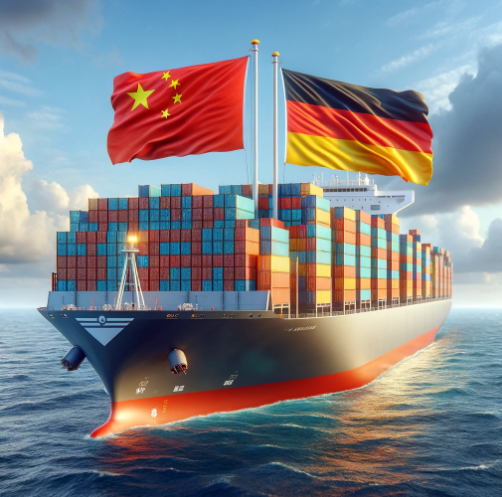Step 1: Choose the Shipping Option
The first step that comes to the mind in shipping from China to Germany is Deciding whether airfreight or sea freight will be used. Which one you choose will depend on how big your item is, the weight of what you need to ship and also on which area it has shipped soon.
Air Freight - Expensive but for valuable goods it may be worth the price Three to five daysHardened castings are broken through twisting of the arm.
Sea Freight: Cheapest for bulky products, a little bit slow (takes 25 to 40 days or more )
Stage 2: Select a Competent Freight Forwarder
A freight forwarder is an intermediary between the shipper and transportation services, helping to manage all of the complexity for international shipping. They manage negotiations, legal documentation and logistics to ensure that your products cross borders with minimal fuss. It is important to choose an experienced forwarder who knows German import requirements.
Step 3 - Geminis Packaging Requirements
Proper documentation is essential to avoid release delays and fulfill both Chinese export as well German import regulations. Key documents include:
Contract of Carriage (bill OF Lading [BOL] or Air Way Bill).
Commercial Invoice: Provided by the seller to (stating details of transaction between buyer and Seller.
A packing list including the contents, weight and dimensions of each parcel.
Certificate of Origin - Confirms the origin country of goods (as this can effect tariff rate)
Part 4: Follow your countries Export and Import Laws
So this is the most important for you to know about export regulation import regulations of (Germany & china)
China: Complete All Necessary Inspections & Export Licensing Before Shipment.
Customs laws of the EU and Germany (some products are prohibited, others need licenses).
Step 5: Plan Pick-Up and In-land Transport
Transport from manufacturer to port of departure. This is usually done with trucking services within China (which could involve rail or barge, depending on your supplier location and the port you are going to use).

Step 6 - Manage Customs Clearance
Perhaps one of the most difficult parts about shipping internationally is customs clearance. On the hole, this process will be handled by your freight forwarder but some prep-work to make sure all duties and taxes are taken care of can prevent any customs-related issues.
Step 7: Track Your Shipment
Online tracking systems are offered by most freight forwarders as well as carriers and these allow you to keep an eye on the progress of your shipment in real-time. While package tracking does not ease the pain of waiting, it surely helps you understand what to except and when.
Arrange to take receipt and final delivery
This local agent or partner will take delivery of your shipment in Germany when it arrives. Then arrange final delivery to your end destination. This would probably require the customs clearance here and then also an import duty to be paid in Germany.
Shipping items internationally is a complicated process that must be carefully planned and managed. Knowing each step, and working with logistics experts helps ensure efficient shipping.
Explore shipping from china to germany for more detailed information and expert advice on an extensive guide about overseas logistics from the China-Germany perspective.